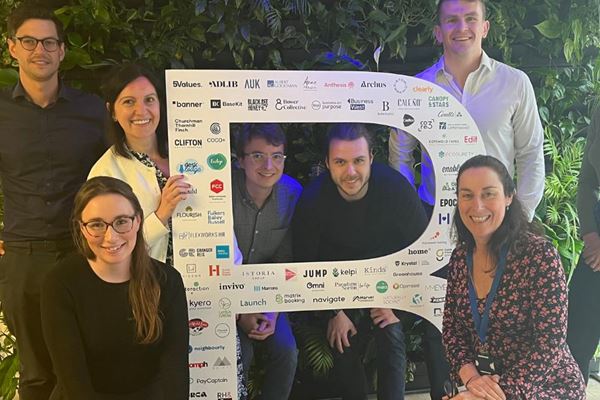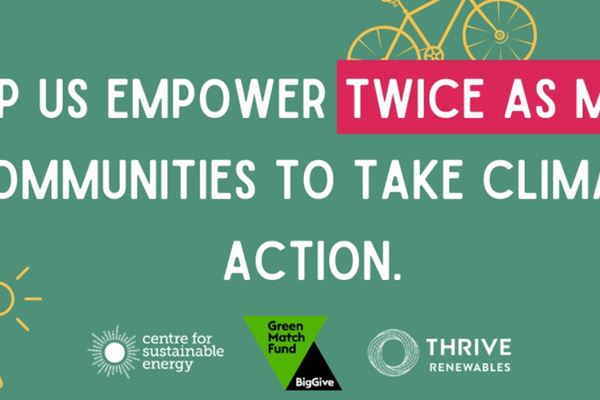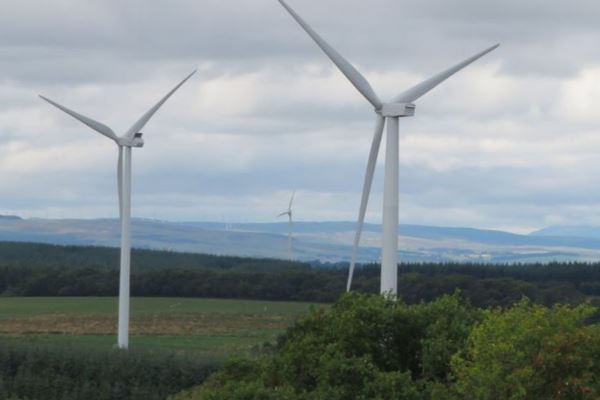In November, COP26 brought home the stark realities of the climate crisis, with thousands gathering in Glasgow to demand change from their world leaders. While the conference renewed the sense of urgency, it also reminded us that we all have a role to play in reducing dangerous climate change. Put simply, there is no time to waste.
As some of the biggest emitters in the UK, this is certainly the case for businesses. In fact, according to a report from Sky and WWF, companies are responsible for two-thirds of the UK’s domestic land-based emissions every year, with large businesses accounting for the largest proportion of these. It suggests that, unless all large businesses in the UK draw up and implement plans to decarbonise in line with the 1.5C trajectory within the next two years, we risk missing our long-term net zero targets.
Of course, some businesses will have more work to do than others but it’s important to remember that being environmentally and socially conscious is a continuous journey and, importantly, one that your customers, shareholders and employees will thank you for embarking on. Below we explore some of our green new year’s resolutions for companies looking to prioritise sustainability in 2022.
1. DEVELOP A NET ZERO STRATEGY
For all of us, the race to zero is now unavoidable. In fact, in the words of Mark Carney: “Firms that adjust their business models to the transition to net zero will be rewarded handsomely. Those that fail to adapt will cease to exist.”
When making any net zero commitments, businesses must first evaluate the different kinds of carbon emissions they create as part of their own operations, as well as the wider supply chain. Without collecting adequate data, you will be unable to set realistic targets or track your progress in meeting them.
For example, we calculated that – in 2020 – our direct carbon emissions (scopes 1 and 2) was 2.6 tonnes, compared to the average UK citizen which has a carbon footprint of 10.4 tonnes of carbon emissions per year. While this is already low, we are now working to calculate our indirect emissions (scope 3) coming from the construction and operation of our renewable energy projects. Once this is calculated, we will be reviewing our overall figures again to ensure we are taking the reduction and offset measures required to be net zero by 2030.
For many businesses, making changes under scope 1 and 2 is the easiest way to start reducing emissions and there are many resources available to support you with this, including the United Nations' Race to Zero campaign.
2. JOIN THE B CORP COMMUNITY
B Corporations are businesses that meet the highest standards of social and environmental performance, public transparency, and corporate accountability to balance profit and purpose. Alongside establishing yourself as a true leader in your market, there are multiple benefits to certification: committed and motivated employees, increased customer loyalty and higher levels of innovation.
As one of the UK’s first mission driven businesses, Thrive was founded 26 years ago to help power the UK’s transition to clean energy, with the ultimate aim of reducing carbon dioxide pollution to avoid dangerous climate change. We’re proud to say that we certified as a B Corp at the start of 2021 and haven’t looked back since. You can find out more information about the movement and how to start the certification process here.
3. SWITH TO 100% RENEWABLE ENERGY OR HOST AN ON-SITE RENEWABLE PROJECT
Switching to 100% renewable energy can go a long way in helping you reach your net zero targets, as well as provide significant bottom line and reputational benefits.
While there are many renewable energy suppliers in the UK you could engage with, it’s worth noting that you could also benefit from renewable power generated directly on-site. Hosting your own renewable project – for example, a wind turbine or rooftop solar array – can help you manage your energy costs in an increasingly volatile marketplace.
As seen recently, fossil fuels are often subject to extreme changes in supply and demand. Using renewable sources of electricity is therefore a way to provide the stability needed, giving you the opportunity to secure long-term, consistent energy prices which are typically cheaper than connecting to the grid.
4. IMPROVE YOUR ENERGY EFFICIENCY
Using energy wisely is another way to cut your carbon footprint. There are plenty of things you can introduce in the workplace to ensure you consume energy more smartly. For example, switching your lights to LEDs and ensuring you turn your technology off at the end of the day. Although they sound small, these changes are all important steps in reducing your total emissions.
5. OFFER STAFF GREEN INCENTIVES
When it comes to ensuring your green initiatives are followed, it’s critical that you engage your workforce as early in the process as possible. They need to understand what is expected of them and why it’s important – not only in the context of the business but as part of a wider sustainable society.
You can further motivate your employees by incentivising green alternatives. For example, we offer a bike to work scheme and are also signed up to Climate Perks – a scheme that enables us to offer paid 'journey days' to empower staff to choose low-carbon holiday travel.
Businesses are now facing increasing pressure from consumers, investors and employees to look beyond profit and recognise the power of purpose. And, while it’s really positive to see the number of UK companies making sustainability a priority, there’s always more that can be done. True sustainability is a journey, not a destination.



